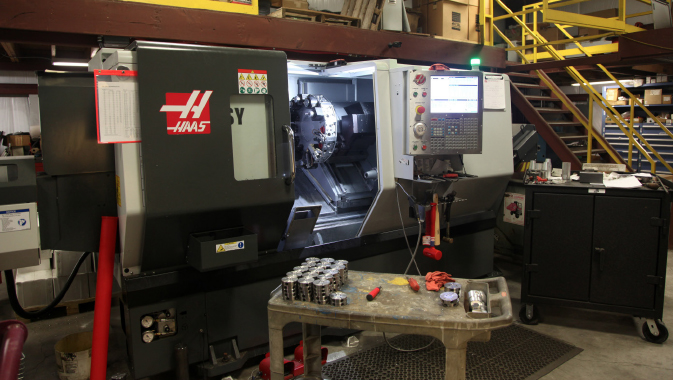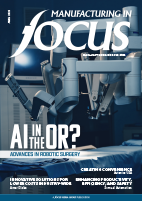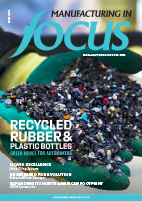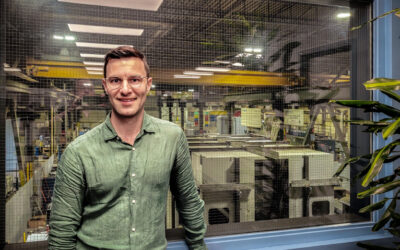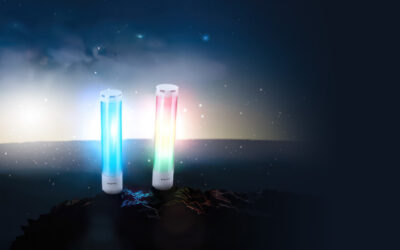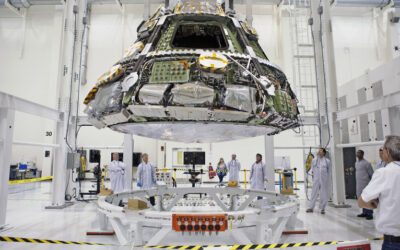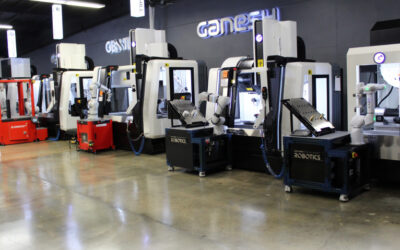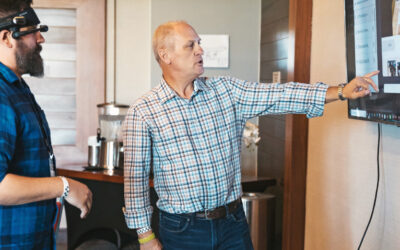Harbach is a manufacturer of specialized positioning and holding equipment for welding. The company offers a wide range of solutions that either hold an object in place, or automate the process of moving the object into position so that it can be safely and effectively welded. Harbach products make welding easier, and improve both the safety of the process and the quality of the result.
~
Harbach was founded by Will Harris and Gerald Dasbach in 2004. Prior to then Harris owned and operated a company focused on the development of automation technologies and improved manufacturing procedures. He opened this company in 1990 and ran it until Harbach was established. Dasbach opened a welding company in 1999 that eventually became Fit-up Gear, which today is a branch of the Harbach family of companies.
Dasbach recognized the value in the high-end automation work that Harris was doing and the improvements that could be made to his own products by incorporating the technologies Harris had developed. Harris had a similar realization and, seeing that the two operations would be stronger together, made the strategic decision to sell his company in Oklahoma and move to Houston where Dasbach was set up. “We came together in 2004,” says Dasbach, “We’ve grown consistently since then.” The two united and chose a name to reflect the merger, joining their names to make Harbach in image of the joining of their endeavors.
Harbach is a manufacturing company committed to developing products that will increase the efficiency, the safety, and the quality of its customers’ welding projects. For decades the general focus of companies in this industry has been to increase the speed of the process by improving the equipment to allow weld technicians to get more weld deposits down in less time. The industry has made incredible strides in this area, innovating very effective process improvements and technologies that have made the overall process much more efficient and the industry more profitable. Harbach, however, is taking a different approach.
In order to weld something, it first has to be fit into position. This is a very challenging and often dangerous task. It requires the use of large, unwieldy overhead cranes, come-alongs, cumbersome jacks, dogs and wedges to move heavy pieces of steel. This is a dangerous process. “We’re being told by customers that it takes three times as long to fit something up as it does to weld something up,” says Dasbach.
“Round pipe is not round and flat steel is not flat,” continues Harris, “so if you have the task of making a square box out of steel that has some curvature to it, you have a separation between the two pieces of metal that are being welded. So you’re pushing and pulling and getting the material so that it can be welded properly. That’s where our tools come into effect.” Harbach has identified that the real path toward improved weld processes is in better fitting and holding equipment, and has developed a range of products to that end.
In the beginning, Harbach’s approach was to use temporary welds to hold things in place. A piece of metal would be temporarily welded on to hold the two pieces together and then removed when the process was complete. The problem with this is that grinding off a temporary weld would result in a scarred surface on the final product. Recently, Harbach has partnered with a magnetics company called Maglogix, offering the strongest pound for pound switchable magnets in the world. Using magnets enables the company to approach fitting in a completely new way, eliminating the problem of scars and burrs from temporary attachments entirely.
A tag-line that the company uses in one of its catalogs is “Changing the mindset of the welding industry.” Bringing new and innovative technologies into the marketplace is a challenging task because existing procedures have a lot of history and, as is the case in any industry, people can be resistant to change. The solution to fitting up two pieces of metal prior to welding them in the past has been to use dogs and wedges. If two pieces of metal need to be welded but they are out of alignment, an L-shaped piece of metal is temporarily attached to the lower piece, so that there is a space to drive a wedge under it. The wedge is then placed into the space across the two pieces of metal and hammered in to drive the lower piece up into position. When a welding technician can’t complete the fit with a dog and wedge, traditionally the solution would be to get a bigger dog, a bigger wedge, and a bigger hammer. This process continues toward bigger and bigger tools, which eventually leads to a bigger injury when there is a failure. “We’re trying to change the mindset of guys who have been taught this way their whole lives,” says Dasbach. “Here’s a faster, easier, safer way of doing things.”
After fourteen years of operating in the industry, Harbach has established itself as a key player in the field of improving welding processes. Today, the company sits on slightly less than three acres with roughly 30,000 square feet under roof. It employs fifteen mechanical and electrical engineers and programmers on the engineering side. For its capacity and expertise it runs lean, but Harbach believes that it’s the quality of its team members that has enabled it to develop such a successful product line and to make consistent strides in the industry.
In terms of equipment, the company has everything it needs to design and build products in-house, and to prototype new ideas quickly. This fosters an innovative spirit that pushes the company to be creative. It has a water jet table, a press brake, CNC mills and lathes, a new CNC router, and more. Harbach is out in the field listening closely to the challenges of its customers and it has everything it needs to design creative solutions. “When customers ask for something, we jump right into the middle of it,” says Dasbach. “If there’s a need, we fill it; often it will lead to a new tool that will end up in our catalog.”
Harbach makes the effort to spend the necessary hours with customers, walking their shop floors in their shoes and listening to their needs. Rather than having a team of engineers dreaming up solutions to problems they have a hunch about, engineering projects are informed directly by the customers in the field, and Harbach has developed a very successful product line using this approach.
Harbach customers have very challenging tasks to accomplish, and they depend on Harbach equipment to help them manage safely, efficiently, and with a quality result at the end. Over nearly a decade and a half, the company has developed a line of tools that can truly improve many welding processes, and particularly welding problems that a customer might have. The trust that the company has earned has resulted in customers often looking to Harbach for advice. “They’ll say, ‘this isn’t in your wheel well, but what have you seen in the world for what we’re trying to do? Is there something out there?’” says Dasbach. “We get those calls frequently.” It’s an indication of the reputation and the confidence that the customer has earned in its customers.
Harbach sees this customer-focused approach to business as a key differentiator. Customer service is central to the values of the company and the team of people who operate within it. It’s not uncommon for a team of Harbach employees to visit a customer’s facility for days at a time in order to gain a clear understanding of a problem and develop a solution before returning to the shop to start designing and building a product that can help. Harbach products meet the actual needs of actual customers whose safety and productivity depend on them.
The company manufactures fitting and positioning equipment, but this is the second phase of a two-phase model. The first, and probably the most fundamental aspect of its value proposition is in its commitment to understanding the needs of the industry and engineering the most effective solutions to address them. “When we walk into a facility the first thing we say is, ‘show us where your biggest logjam is. What’s your biggest headache, we’re here to fix it.’ That’s where they’re spending a lot of money, time, and effort when they shouldn’t be. We want to build a tool to fix it for them.”

